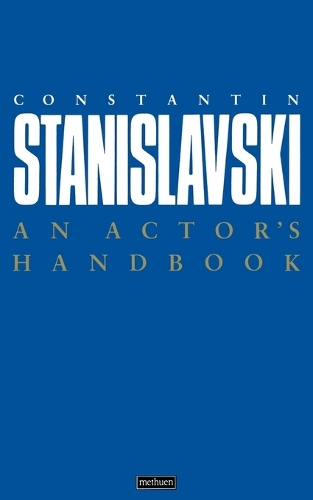
An Actor's Handbook: An Alphabetical Arrangement of Concise Statements on Aspects of Acting
(Paperback)
Publishing Details
An Actor's Handbook: An Alphabetical Arrangement of Concise Statements on Aspects of Acting
By (Author) Constantin Stanislavski
By (author) Constantin Stanislavski
Bloomsbury Publishing PLC
Methuen Drama
1st August 2006
United Kingdom
Classifications
General
Non Fiction
792.028
Physical Properties
Paperback
160
Width 124mm, Height 202mm, Spine 10mm
196g
Description
Stanislavski was the foremost influence on the "Method" school of acting, as developed by Lee Strasberg. Here in concise form is what Stanislavski himself said about acting, aimed at students, experienced theatre people and laymen interested in stage craft. These collected short statements on a variety of subjects cannot replace the full expression of Stanislavski's ideas and discoveries in his other books, but they will serve to refresh the reader's memory and pin-point what Stanislavski has to offer inquiring minds both in and out of the theatre.
Author Bio
Constantin Stanislavski (1863-1938) was a Russian director who sought 'inner realism' by insisting that his actors find the truth within themselves and 'become' the characters they portrayed. His work brought international fame to the Moscow Art Theatre, which he had co-founded with Vladimir Nemirovich-Danchenko in 1897. During his early years at the Moscow Art Theatre, he directed the first productions of Chekhov's Uncle Vanya (1899), Three Sisters (1901) and The Cherry Orchard (1904) as well as a series of celebrated versions of Shakespeare. Stanislavski toured America with the company in 1923. After World War II, the US edition of Stanislavski's treatise An Actor Prepares (1926) became a bible of the Method school of acting., Constantin Stanislavski died in 1938 and is the most influential person in actor training to date. As co-founder of the Moscow Art Theatre, he developed his theories of acting.
